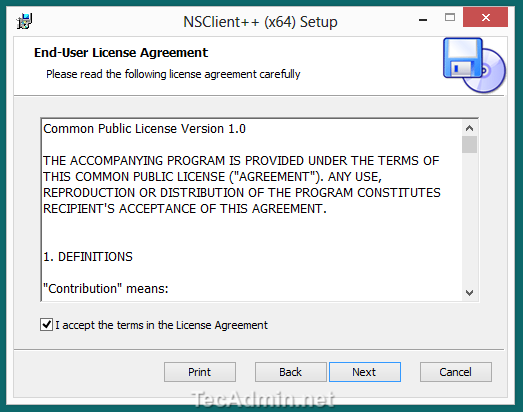Install Nagios Client On Windows

This article describes how to monitor Windows machines “ private” services such as CPU load, Disk usage, Memory usage, Services, etc. For this, we required to install an NSClient++ addon on the Windows machine. The addon acts a proxy between the Windows machine and Nagios and monitors actual services by communicating with the check_nt plugin. The check_nt plugin already installed on the Nagios Monitoring Server, if you followed our Nagios installation guide. We assume that you’ve already installed and configured Nagios server according to our following guides. • • To monitor Windows Machines you will need to follow several steps and they are: • Install NSClient++ addon on the Windows Machine.
• Configure Nagios Server for monitoring Windows Machine. • Add new host and service definitions for Windows machine monitoring. • Restart the Nagios Service.
Nrpe install ubuntu, ubuntu install nrpe, How To Install NRPE on Ubuntu 17.10, 16.04,14.04 LTS and 12. Install Software On Thumb Drive. 04 LTS and LinuxMint. Install Nagios client Ubuntu.
To make this guide simple and easier, a few of configuration already done for you in the Nagios installation. • A check_nt command definition already added to the command.cfg file. This definition command is used by check_nt plugin to monitor Windows services. • A windows-server host template already created in the templates.cfg file. This template allows you to add new Windows host definitions. The above two files “ command.cfg” and “ templates.cfg” files can be found at /usr/local/nagios/etc/objects/ directory.
You can modify and add your own definitions that suits your requirement. But, I’d recommend you to follow the instructions described in this article and you will be successfully monitoring your windows host in less than 20 minutes. Step 1: Installing NSClient++ Agent on Windows Machine Please use the below instructions to install NSClient++ Agent on the Remote Windows Host. First download the latest stable version NSClient++ 0.3.1 addon source files, which can be found at below link.
• Once you’ve downloaded latest stable version, unzip the NSClient++ files into a new C: NSClient++ directory. Now open a MS-DOS command prompt from the Start Screen –>Run –>type ‘ cmd‘ and press enter and change to the C: NSClient++ directory. C: NSClient++ Next, register the NSClient++ service on the system with the following command. Nsclient++ /install Finally, install the NSClient++ systray with the following command.
Nsclient++ SysTray Open the Windows Services Manager and right click on NSClient go to Properties and then ‘ Log On‘ tab and click the check box that says “ Allow service to interact with the desktop“. If it isn’t already allowed, please check the box to allow it to.